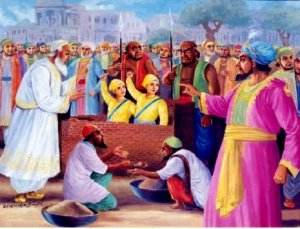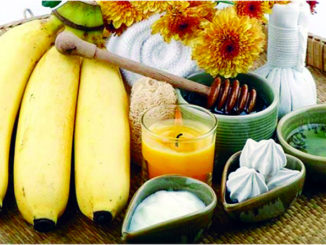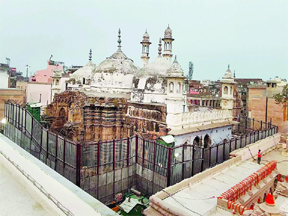
The four Sahibzade Khalsa warriors princes were the sons of Guru Gobind Singh (1666–1708), the of Sikhs during the Mughal empire (1526–1857). In 1699, Guru Gobind Singh (born Gobind Rai) created the Khalsa, an elite warrior band of initiated devout orthodox Sikhs to protect the innocent from religious persecution. Guru Gobind Singh had three wives and four sons: Ajit, Jujhar, Zorawar, Fateh. All four of his sons were initiated into the Khalsa and all were executed by Mughal forces before the age of 19.
Sikhism honors the illustrious martyred sons of Guru Gobind Singh in the prayer of ardas for their valor and sacrifice as “Char Sahibzade,” the four princes of the Khalsa warrior order.
The martyrdom of the four sons of Guru Gobind Singh, the founder of Sikh religion is one of the most tragic and yet most glorious part of the proud community’s history.The Sikhs have a long history of heroic struggle and sacrifice.The 5th Master of the Sikhs, Guru Arjan Dev Ji and the 9th Master of the Sikhs, Guru Tegh Bahadur Ji made supreme sacrifices for humanity, at large.The 10th Master and the Founder of the Khalsa which means pure (that is how the Sikhs came to be known) made sacrifices that stood out in the realms of world history.The martyrdom of the four Sahibzadas, Guru Gobind Singh’s sons, has to be seen in that glorious tradition that Sikhs take pride in and derive inspiration from.
The four young princes of genteel birth – The Char Sahibzade – is the term endearingly used for the four sons of Guru Gobind Singh, all of whom died as martyrs while still in their tender age.Their names are reverently preserved in Sikh memory and are recalled every time the Sikh Ardas or prayer of supplication is recited at every religious ceremony in a congregation and privately twice a day (after the morning and evening prayer) by an individual. Sahibzada Ajit Singh, the eldest son of Guru Gobind Singh, was born to Mata Sundri at Paonta on 26 January 1687.The following year the Guru and his family returned to Anandpur. Sahibzada Jujhar Singh, the second son of Guru Gobind Singh, was born to Mata Jito-ji at Anandpur on 14 March 1691. From a very young age both brothers were taught the religious texts, philosophy and history alongside their training in swordsmanship, archery and horse riding. Soon they grew up into handsome young men, strong, intelligent and natural leaders of men.
In 1699 both Sahibzade Ajit Singh and Jujhar Singh, 12 years and 8 years of age respectively, received the rites of Khalsa initiation. Soon after the creation of Khalsa on 30 March 1699, Ajit Singh had his first test of skill. A Sikh Sangat coming from Pothohar was attacked and looted by Ranghars on the way, a short distance from Anandpur across the River Sutlej. Guru Gobind Singh sent Sahibzada Ajit Singh, then barely 12 years of age, at the head of about 100 Sikhs to punish the Ranghars and to recover the loot.The following year, 29 August 1700,when the hill Rajas, backed by Imperial troops, attacked Anadpur. Ajit Singh was made responsible for the defense of Taragarh Fort which became the first target of attack. Ajit Singh, assisted by Bhai Ude Singh, a seasoned soldier, repulsed the attack. On 15 March 1701 a column of Sikh devotees coming from Darap area (present Sialkot district) was waylaid by Gujjars and Ranghars. Sahibzada Ajit Singh led a successful expedition against them.
Instructed by his father, on 7 March 1703, he took out 100 horsemen to Bassi, near Hoshiarpur and rescued a young Brahman bride forcibly taken away by the local Pathans. During the prolonged siege of Anandpur, it became necessary to leave the city under the pressure of pursuing enemy. Both the Sahibzade were experienced warriors, strong and fearless, displaying qualities of courage and steadfastness. On the night of 5 December 1705 Guru Gobind Singh gave each of his sons the command of a band of brave Sikhs to wade through the flooded Sarsa river on horseback and head towards the Fort of Chamkaur. Amidst the fierce fighting in the darkness of night and the hazardous long journey the Guru and the Sikhs, together with his family and both the elder Sahibzade in command of their bands, made their way to Chamkaur.
Further reduced in numbers by casualties at the hands of the enemy they reached Chamkaur by nightfall on 6 December 1705 and took up position in the Garhi – high walled fortified house.The enemy,with extra reinforcements from Malerkotla and Sirhind and from among local Ranghars and Gujjars, threw a tight ring around the fort of Chamkaur. An unequal but grim battle commenced with the dawn of 7 December 1705 – in the words of Guru Gobind Singh’s Zafarnama — ‘a mere forty defying a million’.The Sikhs, after they had exhausted the meager stock of ammunition and arrows, made sally in batches of five to engage the encircling enemy with sword and spear. Sahibzada Ajit Singh led one of the sallies and laid down his life fighting in the bloody battle, followed by his younger brother Sahibzada Jujhar Singh who led the next sally. Sahibzada Ajit Singh and Sahibzada Jujhar Singh, 18 and 14 years old respectively,who like the other brave Sikhs, fell fighting heroically.The velour displayed by the young sons of Guru Gobind Singh has been sympathetically and vividly narrated in the poems of a devout Muslim, Allahyar Khan Jogi.
Today Gurdwara Qatalgarh Sahib (Shahid Ganj) is the main shrine at Chamkaur.This marks the site where the most fierce hand-to-hand combat took place on 7 December 1705 between the Mughal army and a handful of brave Sikhs, including Sahibzade Ajit Singh and Jujhar Singh, and three of the original Panj Piare (Guru’s Five Beloved ones). Unfortunately, during the crossing of the flooded river Sarsa,Mata Gujri and the two younger Sahibzade Zorawar Singh and Fateh Singh, aged 9 and 7 years respectively, together with their cook, Gangu,were separated from the Guru and the Sikhs. Seizing the opportunity of a reward Gangu spied on them and handed them over to the enemy. Both the young Sahibzade were executed on 12 December 1705 in Sirhind. Sahibzada Zorawar Singh was born on 17 November 1696 and Sahibzada Fateh Singh on 25 February 1699. After the tragic death of their mother Mata Jito-ji (5 Dec 1700) they were brought up under the care of their grandmother Mata Gujri Ji.
Both the princes were closely attached to their grandmother.Mata Gujari took charge of both the princes as the column moved out of Anadpur. As Guru Gobind Singh evacuated Anandpur on the night of 5 December 1705, he was pursued by the host. In front ran the river Sarsa, swollen with rain water. Under cover of a quick rearguard action fought on the river bank, the Guru, his brave Sikhs and his family succeeded in crossing the Sarsa. Unfortunately, in the commotion of confused cries in the dark,Mata Gujri and the two younger Sahibzade, along with their cook, Gangu,were separated from the Guru and his band. Not knowing where to go Gangu offered to shelter them at his house in village Kheri, now known as Saheri, near Morinda.The journey being hazardous and dark they reached Kheri the following night. Tired and hungry they were asked to rest in the attic. But Gangu proved deceitful. During the night Gangu stole Mata Gujri’s saddlebag containing cash and valuables. In the hope of a reward from the government he spied on them.With the help of the village headman he betrayed them to Jani Khan and Mani Khan, the Ranghar officials of Morinda.
The latter took Mata Gujri and the two Sahibzade into custody and in the morning dispatched them to Sirhind where they were confined in the Cold Tower – Thanda Burj – of the Fort. On the morning of 9 December 1705 Zorawar Singh and Fateh Singh, aged 9 and 7 respectively, were summoned before the faujdar,Nawab Wazir Khan.Wazir Khan tried to lure the Sahibzade to embrace Islam with promises of riches and honors. But the brave and fearless sons of Guru Gobind Singh spurned the suggestion. He then threatened them with death but they remained undaunted. Nawab Sher Muhammad Khan, a high ranking officer and chief of Malerkotla,who was also present in the court, intervened for the innocent children to be spared their lives; to be given some more time to ponder over the suggestion to convert. As a result the two Sahibzade spent another two days of severe winter in their grandmother’s lap in the Cold Tower. Still adamant as ever, on 11 December 1705 Nawab Wazir Khan ordered their death by bricking them alive.Nawab Sher Muhammad Khan pleaded against the death sentence on the grounds that the boys were too young to be given such a harsh penalty.
They could not, in any case, be held responsible for the actions of their father. As Wazir Khan began to waver at the just reproof of his peer, Suchchanand put in a remark “The progeny of a serpent shall grow up as serpents, and should therefore be shown no mercy.” Wazir Khan was encouraged by these words and thereupon reiterated his order for the children to be bricked alive in a wall. By Divine Will, as the masonry around their tender bodies reached chest high, it crumbled.Wazir Khan’s anger at this failure ordered the princes back to the Cold Tower for another night.The next day, 12 December 1705, the Sahibzade were once again offered the choice to convert to Islam or face death by execution.The brave Sahibzade chose the latter and were executed. The aged Mata Gujri,who had all along been kept in the Cold Tower, only a short distance away, breathed her last as the news of the execution reached her ears. After the death of Mata Gujri and the two Sahibzade, Seth Todar Mall, a wealthy merchant and an influential citizen of Sirhind, made arrangements to perform the last rites. But no one would give him a patch of land in the locality to be used as cremation ground.Then one Chandhari Atta, a local resident, agreed to sell him a small plot.
He stipulated that Todar Mall could take only as much land as he could cover with gold nuggets, mohran.The Seth produced the mohran and bought the piece of land he needed. After the cremation a Sikh, Jodh Singh, of village Attevali buried the ashes. Sirhind suffered a full fury of Sikh ire when Banda Singh Bahadur marched upon it with his daring host.Wazir Khan was killed. Diwan Suchchanand,who explicitly championed the penalty laid upon the young Sahibzade,was captured and killed. Sirhind and the Fort were razed to the ground. A memorial was erected marking the spot where the two princes were executed. In 1764 Maharaja Karam Singh of Patiala built the Gurdwara Fatehgarh on the site and ordered to search for and determine the exact spot where the three were cremated. At the spot, in 1843, the Gurdwara Joti Sarup was built. In 1888 Giani Thakar Singh started the annual Jor-Mela (fair) held during the last week in December to commemorate the martyrdom of Guru Gobind Singh’s mother,Mata Gujri Ji, and his two sons Sahibzadas Zorawar Singh and Fateh Singh.A century later, in 1944, Maharaja Yadavinder Singh set up a committee for the improvement of Gurdwara Fatehgarh Sahib and Gurdwara Joti Sarup Sahib.Today Gurdwara Fatehgarh, with all the affiliated shrines, is administered directly by Shiromani Gurdwara Parbandhak Committee.
Sahibzada Ajit Singh (1687–1699)
Birth
Ajit Singh was born on January 26, 1687 CE, according to the Sikh calendar called the Vikram Samvat (SV) on the fourth day of the waxing moon in the month of Magh, SV year 1743. He was Guru Gobind Rai’s eldest son, and he was born to the guru’s second wife Sundari at Paonta, and at birth named Ajit, meaning “Invincible.”
Initiation
Ajit was given the name Singh when he was initiated into the Khalsa at the age of 12 and drank of the immortal nectar along with his family on the first Vaisakhi Day, April 13, 1699, at Anandpur Sahib, where his father took the name Tenth Guru Gobind Singh.
Martyrdom
Ajit Singh was martyred at the age of 18, on December 7, 1705 CE at Chamkaur, after he volunteered to leave the besieged fortress with five Singhs and face the enemy on the battlefield.
Sahibzada Jujhar Singh (1691–1705)
Birth
Sahibzada Jujhar Singh was born on Sunday, March 14, 1691 CE, in the seventh of the month of Chet, SV year 1747. He was the second eldest son of Guru Gobind Rai, was born to his first wife Jito at Anandpur, and at birth named Jujhar, meaning “Warrior.”
Initiation
Jujhar was initiated at eight years of age along with his family and given the name Singh at Anandpur Sahib on Vaisakhi, April 13, 1699, when his father Guru Gobind Singh created the Khalsa order of warrior saints.
Martyrdom
Jujhar Singh was martyred at the age of 14, on December 7, 1705 CE at Chamkaur where he earned the reputation of being likened to a crocodile for his fierceness in battle, when he volunteered to leave the besieged fortress with five of the last Singhs standing, and all achieved immortality on the battlefield.
Sahibzada Zorawar Singh (1696–1699)
Birth
Wednesday, November 17, 1696, on the first day of the waning moon in the month Maghar, SV year 1753. The third son of Guru Gobind Singh, he was born to the Guru’s first wife Jito at Anandpur, and at birth named Zorawar, meaning “Brave.”
Initiation
Zorawar was given the name Singh at the age of five and was initiated along with his family members Anandpur Sahib in the first Amritsanchar ceremony held on Vaisakhi Day, April 13, 1699.
Martyrdom
Sahibzada Zorawar was martyred at the age of six, at Sirhind, Fatehgarh, December 12, 1705 CE, on the 13th day of the month of Poh, SV year 1762. Zorawar Singh and his younger brother Fateh Singh were captured with their grandmother Gujri, the mother of Guru Gobind Singh. The sahibzade were imprisoned with their grandmother and put to death by cruel Mughal rulers who attempted to suffocate them inside a brick enclosure.
Sahibzada Fateh Singh (1699–1705)
Birth
Born on Wednesday, February 25, 1699 CE, the 11th day of the month Phagan, SV year 1755, the youngest son of Guru Gobind Rai was born to the guru’s first wife Jito at Anandpur, and at birth named Fateh, meaning “Victory.”
Initiation
Fateh was given the name Singh when initiated at the age of three along with his family members on Vaisakhi Day April 13, at Anandpur Sahib 1699, where he partook of baptism by the sword, created by his father, and his mother took the name Ajit Kaur, and brought sugar to sweeten the immortal Amrit nectar.
Martyrdom
Fateh was martyred at the age of six on Sirhind Fatehgarh, December 12, 1705 CE, the 13th day of the month of Poh, SV year 1762. Fateh Singh and his brother survived being bricked up alive, but then the order was given for them to be beheaded. Their grandmother Mata Gujri died of shock in the prison tower.





Be the first to comment